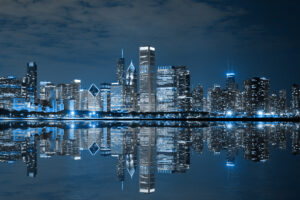
Most employers are familiar with the IRS’s allowance of deductions for certain fringe benefits given to employees, such as meals consumed at the workplace or public transit passes. One fringe benefit that is often overlooked but can benefit both employer and employee is for late night transportation costs.
Internal Revenue Code Section 132 provides an exclusion from gross income to any employee benefit qualifying as a “fringe benefit.” One type of qualifying fringe benefit is the “de minimis fringe,” which is defined as “any property or service the value of which is (after taking into account the frequency with which similar fringes are provided by the employer to the employer’s employees) so small as to make accounting for it unreasonable or administratively impracticable.” 26 U.S.C. §132(e)(1).
Treasury Regulation 1.132-6 titled “De minimis fringes” explains how the IRS interprets the qualifying “de minimis” fringe benefits, including “occasional meal money or local transportation fare.” 26 CFR §1.132-6(d)(2). Specifically, an occasional employer-provided transportation benefit, including taxi fare, qualifies as a “de minimis fringe” benefit if both of the following factors are met:
- Unusual Circumstances – Determining whether the employee is facing “unusual circumstances” depends on the facts and circumstances. The IRS provides two examples, such as “when an employee is asked to work outside of his normal work hours (such as being called to the workplace at 1:00 am when the employee normally works from 8:00 am to 4:00 pm).” Another example of unusual circumstances is “a temporary change in the employee’s work schedule (such as working from 12 midnight to 8:00 am rather than from 8:00 am to 4:00 pm for a two-week period).” at §1.132-6(d)(2)(iii)(B).
- Unsafe Conditions – This factor questions whether it is unsafe for the employee to use an alternative means of transportation, considering such factors as “the history of crime in the geographic area surrounding the employee’s workplace or residence” and “the time of day during which the employee must commute.” at §1.132-6(d)(2)(iii)(C).
If both factors are met, then the excess of the value of each one-way trip over $1.50 per one-way commute is excluded from the employee’s gross income. Id. at §1.132-6(d)(2)(iii)(A).
IRS Publication 15-B (2024), the Employer’s Tax Guide to Fringe Benefits, applies the following factors to this benefit:
-
- The employee would ordinarily walk or use public transportation for commuting.
- The employer has a written policy under which the employer does not provide transportation for personal purposes other than commuting because of unsafe conditions.
- The employee doesn’t use the transportation for personal purposes other than commuting because of unsafe conditions.
Publication 15-B also considers the following test for whether conditions are “unsafe”: “if, under the facts and circumstances, a reasonable person would consider it unsafe for the employee to walk or use public transportation at the time of day the employee must commute. One factor indicating whether it is unsafe is the history of crime in the geographic area surrounding the employee’s workplace or home at the time of day the employee commutes.”
Note that this fringe benefit is not excludible from income for a “control employee” as defined by Treasury Regulation 1.61-21(f)(5)-(6) to mean: (i) an appointed or elected officer of the employer whose compensation is at least $50,000; (ii) a director of the employer; (iii) any employee whose compensation is at least $100,000; or (iv) a person who owns at least 1% of the equity, capital or profits interest in the employer.
Other transportation fringe benefits may include local transportation fare provided to the employee on an “occasional” basis, which depends on the frequency of the benefit provided to the employee and whether the transportation fare is provided “because overtime work necessitates an extension of the employee’s normal work schedule.” 26 C.F.R. §1.132-6(d)(2)(i). Additionally, if there is a “bona fide business-oriented security concern” necessitating the employee to be transported in a vehicle specially designed for security” (e.g., bulletproof glass or armor plating), then the value of the special security design is excludable from the gross income of the employee as a “working condition fringe.” Id. at 1.132-6(d)(2)(ii) & 1.132-5(m).
Like many other fringe benefits, the “late night transportation” benefit can be confusing to apply and substantiate. However, offering this low-cost benefit to employees, especially those working late in areas such as Chicago, can benefit both employees and employers to keep employees safe without an additional cost to the employee. Employers should contact a qualified tax professional with any tax-related questions.
Sandra Mertens
[email protected]

